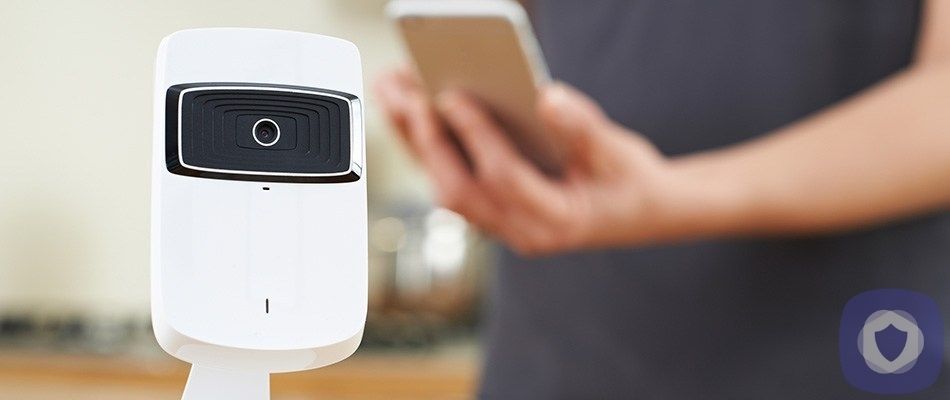As technology advances, so do home security systems. Today, there are many different ways to protect your home from intruders.
Some security companies allow you to purchase the components separately so that you can pick and choose what you want, while others will have you choose from a list of specific packages each of which includes the basic components, plus additional products depending on your personal needs. You may also prefer to purchase the products on your own and DIY the whole thing. Regardless of which path you choose, you’ll want to have a solid understanding of what specific components make up a home security system.
Control panel
Think of the control panel as the brain of your home security system. It is the central piece that helps the other pieces work. This is the piece that generally has a keypad and you use it to arm and disarm your entire system by using a code. The control panel is also where a security company can communicate with you — if you have a monitored system — in case of an emergency.
Security cameras
An outdoor camera is an important security system component that can be used to give police evidence they need to solve a home break-in. Perhaps even more importantly, studies show most burglars will avoid a home that appears to have a security camera system installed outside.
Indoor cameras are also a worthwhile investment. If a thief decides to enter your home, a camera will be able to provide video of the perpetrator, which allows a better chance for authorities to find the bad guys. Some indoor cameras only record at the sign of motion, and can even alert you to movement inside the home.
Doorbell cameras are another great option for home security. While they give you updated information on who has approached your door, many models also provide two-way audio so you can communicate with guests or possible intruders.
Motion sensors
A motion detector is the first line of defense in your security system. They detect movement in your home using several different types of technologies. If a motion sensor is tripped, the alarm in your home will sound and alert you to trouble.
Other parts of your home security system will also include motion sensor technology. For example, some cameras use motion sensors to begin recording. There are also lights that will automatically turn on using a motion sensor if anyone is nearby.
Door and window sensors
A door or window sensor will alert you if either the entryway or the window is breached. One part of the sensor is installed on the window or door and the other is attached to the frame. The two pieces create a closed circuit, and when either is opened, the alarm will sound. These are common in most home security systems and are an integral part of keeping your home secure.
Glass break detectors
Sometimes, thieves will break glass in order to enter your home and it’s possible that that act alone may not trip other parts of your security system like a door or window sensor. For example, if the bad guys smash the sliding glass door without actually opening it, it’s possible the system would not alert you to a break-in. A glass break detector will give you an added layer of security.
Yard and window signs
Most people don’t even think of the security system signs in a front yard or on windows as a part of your security system. But the truth is, burglars take notice of the homes that have signs — and the homes that don’t. These signs are so valuable in fact, that some people even install fake signs to give possible thieves the idea they are protected.
Smoke detectors
Smoke detectors are literally lifesavers. These will alert your family of a possible fire and give you time to call authorities. While you can easily install a traditional smoke detector for safety, there are smart smoke detectors on the market like this one from Nest that can check its own batteries and even talk to you about which room the threat is coming from. (Bonus: The Nest model even has a built-in carbon monoxide detector.)
Carbon monoxide detectors
Carbon monoxide poisoning kills about 500 people every year in the U.S. and sickens another 20,000 to 30,000 people. It doesn’t smell or taste like anything, which leaves many clueless that their home even has a leak. A carbon monoxide detector is a security system component no one should go without.
Automation controls
Although these are not required with any home security system, automation controls are an added convenience more homeowners are opting for with new systems. This allows you to take home security precautions like turning on and off lights or arming and disarming your security system without even being home.
Each one of these security system parts play an important role in protecting your home. Every home and family is different, and it’s up to you to figure out which system works best for your needs.
This article has been reviewed and approved by Officer Banta.

Officer Banta is the official SecurityNerd home security and safety expert. A member of the Biloxi Police Department for over 24 years, Officer Banta reviews all articles before lending his stamp of approval. Click here for more information on Officer Banta and the rest of our team.

